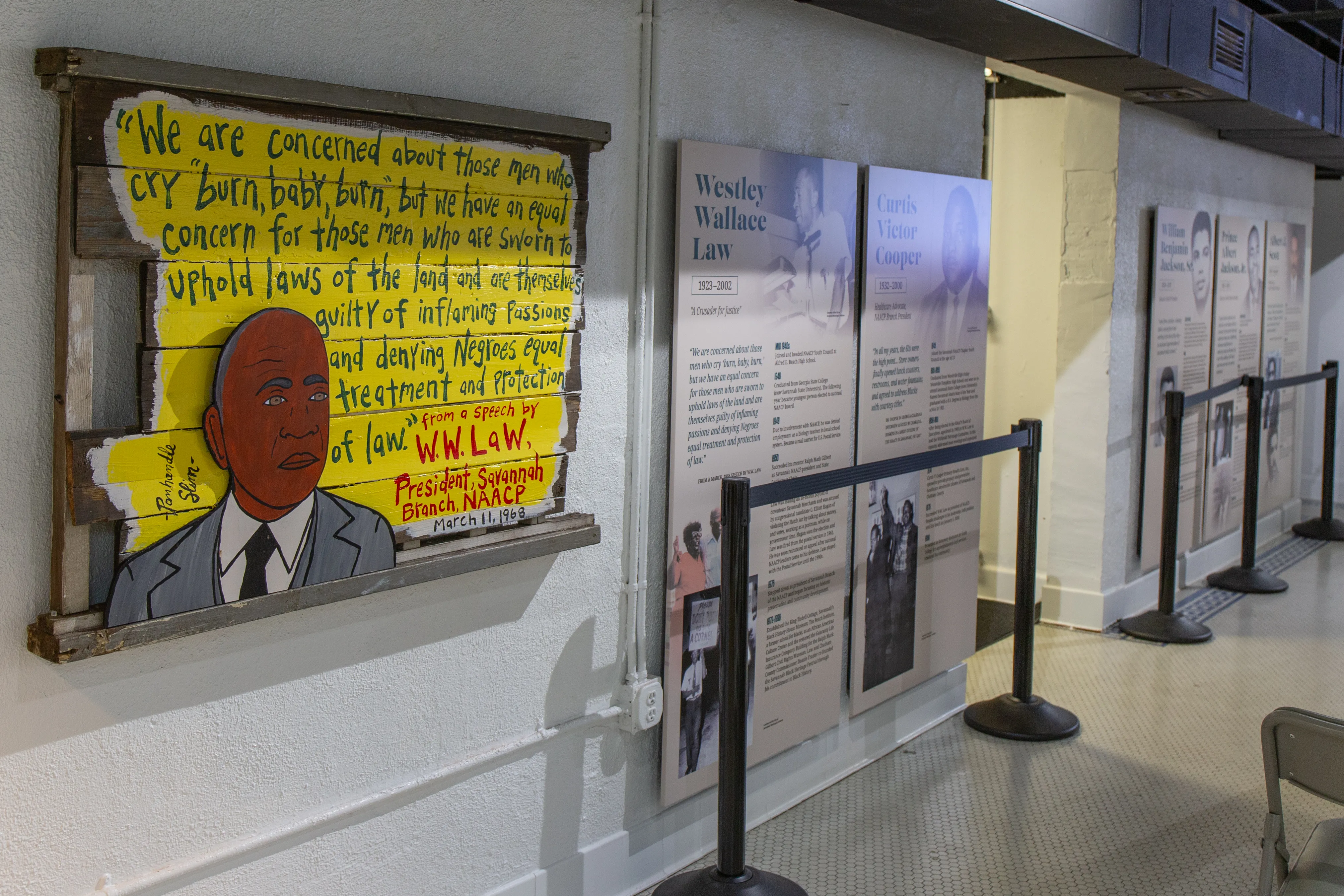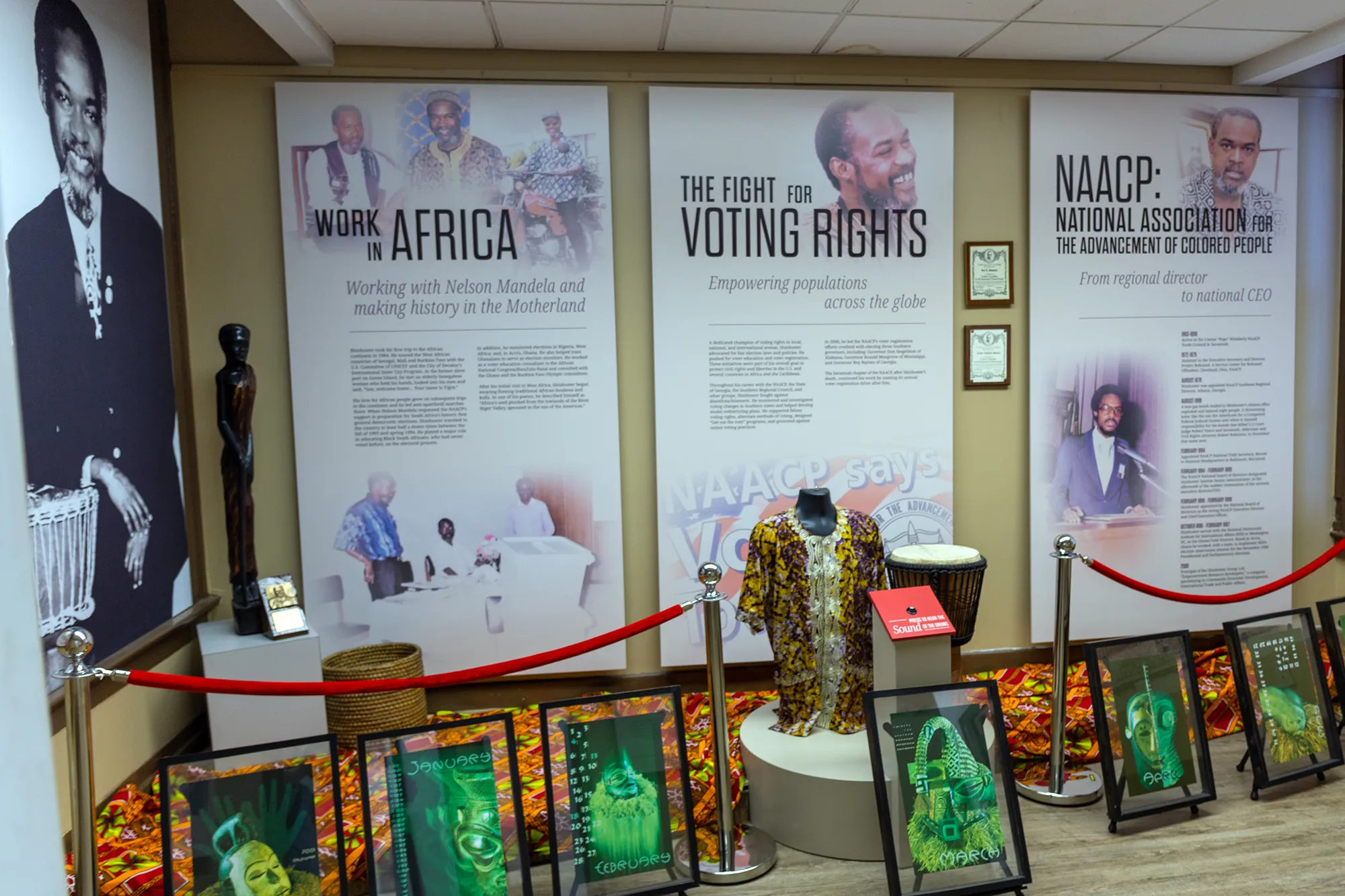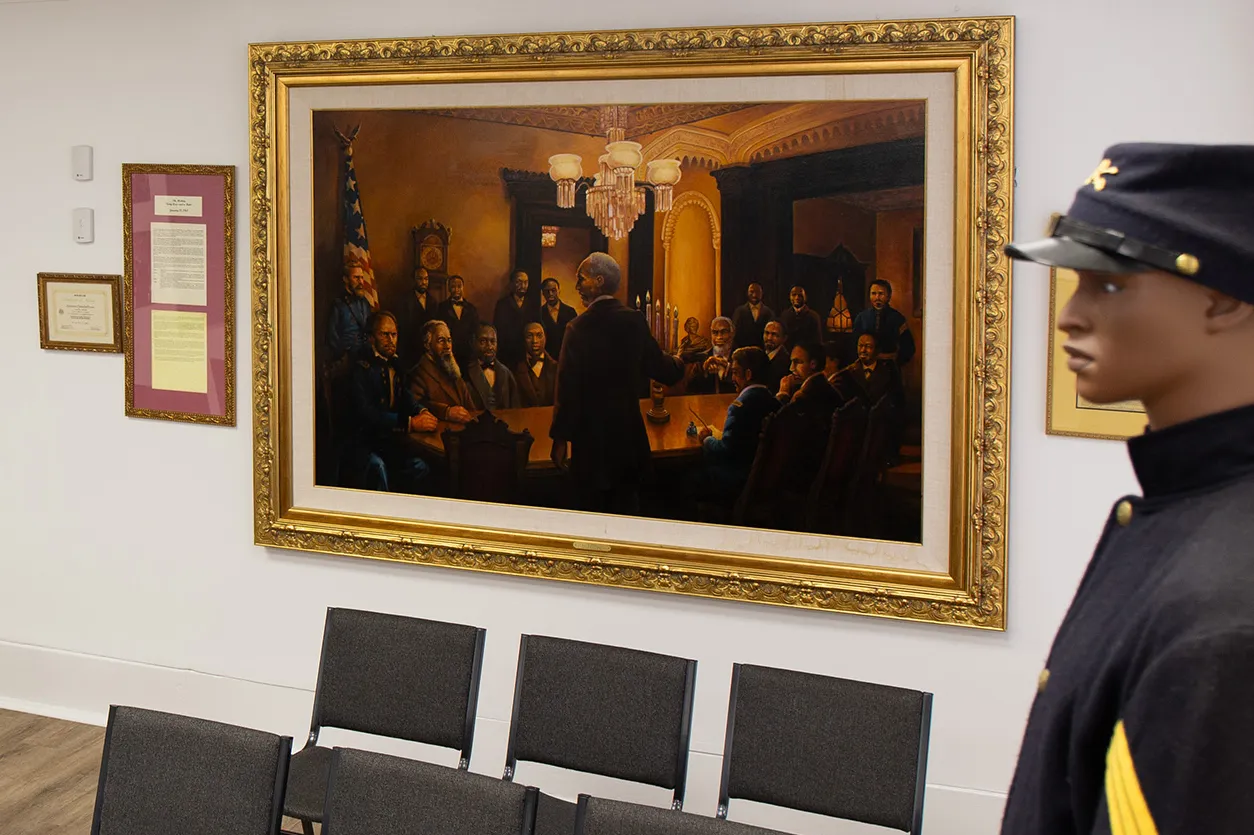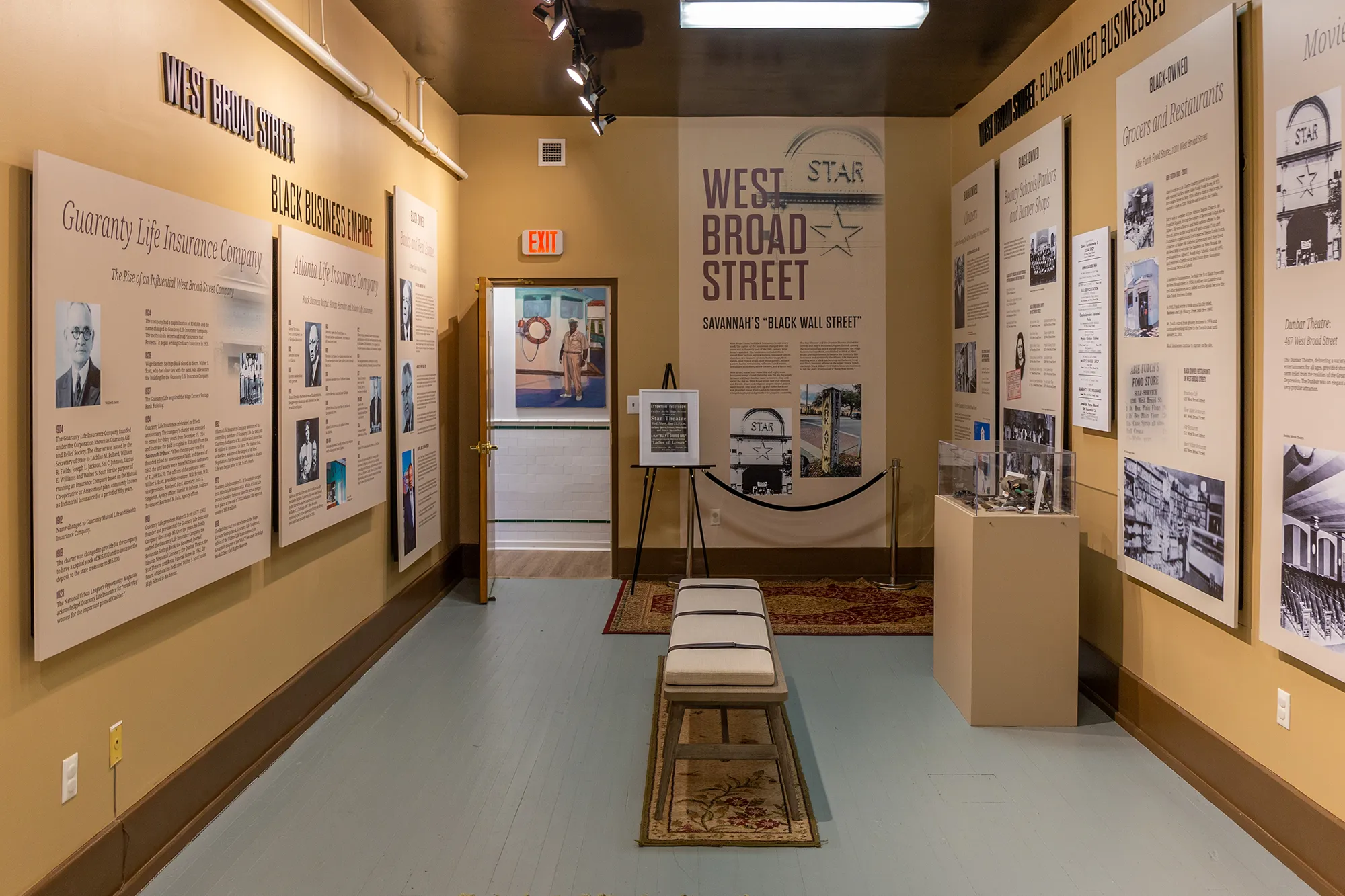Museum Exhibits
On Rotation
The Georgia Negro
Painted in 1946 by Eugene A. Montgomery
Ongoing Exhibitions

A Tribute to the NAACP Heroes and Sheroes
(Lower Level Orientation Gallery)
The mission of the Ralph Mark Gilbert Civil Rights Museum is to tell the story of Savannah’s Civil Rights Movement. The “Heroes and Sheroes” Room on the Museum’s Lower Level tells that story. This room highlights the stories of the NAACP presidents, the women leadership of the Movement, the NAACP Lawyers and the Chatham County Crusade for Voters leadership.
NAACP “Freedom Fighter” Earl T. Shinhoster - “Peace and Power”
(Shinhoster Learning Center, Second Floor)
(1950-2000) Civil Rights Advocate, National NAACP Executive
Earl T. Shinhoster’s growth into a passionate defender of human liberties began with roots deeply embedded in Savannah’s civil rights movement. He was nourished by the dynamic legacy of Ralph Mark Gilbert and by the progressive leadership of W.W. Law. As this exhibit illustrates, the life example he demonstrated is one which continues to provide empowering hope and inspiration.
Aberjhani
Poet, Author, Artist

“The Meeting” Room
(Second Floor, Classroom 1)
In 1865, Field Order #15 was issued by General Tecumseh Sherman in Savannah, Georgia. The order, also known as “Forty Acres and A Mule”, granted land and the opportunity for Education for newly freed people. The Museum presents, a moving representation, of this story through a larger than life painting. It represents “The Meeting” Sherman had with twenty black ministers some of them newly freed when General Sherman arrived.
Visit the Ralph Mark Gilbert Civil Rights Museum hear the history and see the “one of its kind” painting of Sherman meeting with the ministers in Savannah.
"The Meeting"

West Broad Street: Black Business Empire
(Second Floor Gallery)
Blacks settled on the “edges of the city” during urban slavery and remained there after freedom in 1865. They were skilled laborers who worked for themselves. This may explain how, by the 1930s, a predominantly Black business district developed along West Broad. There were barber shops, movie theaters, pressing (or cleaning and tailoring) shops, pharmacies, confectionaries, and much more. It was like Savannah’s own “Black Wall Street.”
In the early 1960s, while civil rights advocates fought to desegregate Savannah, West Broad Street underwent some major changes. Union Station, an architectural centerpiece and railroad gateway to Savannah located on West Broad was demolished in 1963. Black-owned businesses which were not closed or torn down no longer thrived. However, what remained is the building built as the Wage Earners Savings and Loan Bank in 1914, later became the Guaranty Life Insurance Company and the Atlanta Life Insurance Company and today houses the Ralph Mark Gilbert Civil Rights Museum.
The West Broad Street Room is to remind all of this Black Business Empire.
In 1991, the street was renamed Martin Luther King, Jr. Boulevard.
Aberjhani
Poet, Author, Artist
